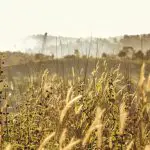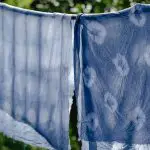Are you seeking a sturdy solution for your landscaping challenges? Heavy-duty landscape fabric may be the answer you've been yearning for. This durable material offers an array of benefits, from weed suppression to soil erosion control.
In this guide, we'll delve into the intricacies of heavy-duty landscape fabric, exploring its installation, misconceptions, alternatives, and maintenance. Whether you're a seasoned landscaper or a novice enthusiast, understanding the nuances of this fabric can elevate your mastery of outdoor space management.
So, let's embark on this journey to unveil the potential of heavy-duty landscape fabric and determine if it's the ultimate solution you've been searching for.
Key Takeaways
- Heavy-duty landscape fabric helps reduce weed growth and preserve soil moisture.
- Proper installation is important to prevent interference with plant growth and ensure durability.
- There are common misconceptions about landscape fabric, such as its inability to completely eliminate weeds and its potential to hinder the breakdown of organic matter.
- Alternatives to heavy-duty landscape fabric include wood chips, pine straw, cocoa bean hulls, and organic mulches.
The Benefits of Heavy-Duty Landscape Fabric
If you're considering using heavy-duty landscape fabric, you'll appreciate its benefits in reducing weed growth and preserving soil moisture. The primary advantage of heavy-duty landscape fabric is its exceptional durability. It effectively prevents weed growth by blocking sunlight and the fabric itself is resilient against tearing and degradation. This ensures that your garden or yard remains free of unwanted weeds for an extended period, reducing the need for constant maintenance and weeding.
In addition to weed prevention, heavy-duty landscape fabric also contributes to soil health and water retention. By acting as a barrier against invasive weeds, the fabric allows the soil to retain its moisture content, promoting healthier root systems for your plants. This is particularly beneficial during dry spells or in arid regions where water conservation is crucial. The fabric's ability to preserve soil moisture creates a more stable environment for plants to thrive, reducing the frequency of watering and promoting better overall plant health.
Considering these benefits, heavy-duty landscape fabric proves to be a valuable investment for maintaining a healthy and flourishing outdoor space while minimizing the effort required for upkeep.
How to Properly Install Landscape Fabric
To properly install heavy-duty landscape fabric, follow these steps:
- Thoroughly clear the area of debris and ensure a smooth, even surface for the fabric.
- Roll out the fabric over the prepared surface, overlapping the edges by at least 6 inches.
- Secure the edges of the fabric using landscape fabric pins or staples every few feet.
- Avoid leaving any loose areas that could be prone to shifting.
- Consider adding a layer of mulch or gravel over the top to anchor the fabric and provide a finished look.
Properly preparing the ground and securing edges are essential steps in ensuring the successful installation of heavy-duty landscape fabric.
Common Misconceptions About Landscape Fabric
Many gardeners believe landscape fabric will completely eliminate the need for weeding, but the reality is quite different. While landscape fabric offers various benefits, there are common misconceptions that need to be addressed to ensure its proper understanding and application.
It's important to debunk these misunderstandings to make informed decisions about using landscape fabric in your garden. Here are some misunderstood benefits and proper installation techniques to consider:
- Complete Weed Elimination: Landscape fabric reduces weed growth but doesn't entirely eliminate it. Some tenacious weeds can still penetrate the fabric, requiring occasional maintenance.
- Soil Nutrient Deprivation: Contrary to popular belief, landscape fabric can hinder the natural breakdown of organic matter, reducing the availability of nutrients to your plants.
- Long-Term Permeability: Over time, landscape fabric can become compacted, reducing its permeability and potentially leading to waterlogging issues.
- Plant Growth Interference: Improper installation and covering of landscape fabric around plants can impede their natural growth and spread.
Understanding these misconceptions will help you make informed choices when considering landscape fabric for your gardening needs.
Alternatives to Heavy-Duty Landscape Fabric
Consider exploring organic mulches as a viable alternative to heavy-duty landscape fabric for weed control and soil protection in your garden. Mulch alternatives, such as organic barriers, offer a natural and eco-friendly solution that can enhance the health of your garden soil while suppressing weed growth. Here are some popular organic mulch alternatives to consider:
| Mulch Type | Description | Benefits |
|---|---|---|
| Wood Chips | Made from shredded tree bark and branches, wood chips provide excellent weed suppression and moisture retention. | Biodegradable, adds organic matter to the soil, long-lasting. |
| Pine Straw | Also known as pine needles, this mulch is lightweight and forms a dense mat, inhibiting weed growth and protecting soil moisture. | Acidic, promotes soil aeration, aesthetically pleasing. |
| Cocoa Bean Hulls | Derived from the shells of cocoa beans, this mulch has a rich, dark color and a pleasant chocolatey scent. | Suppresses weeds, adds nutrients to the soil, natural pest deterrent. |
These organic mulch alternatives not only help to control weeds and protect soil, but they also contribute to the overall health and aesthetics of your garden. By incorporating these natural barriers, you can achieve a thriving garden while minimizing the use of synthetic materials.
Maintaining and Caring for Landscape Fabric
If you have chosen heavy-duty landscape fabric for your garden, it's important to understand how to properly maintain and care for it to ensure its effectiveness in weed control and soil protection. Proper maintenance and care won't only extend the durability of the fabric but also maximize its benefits in your landscaping efforts.
Here are some essential tips for maintaining and caring for your landscape fabric:
- Regular Cleaning: Keep the fabric free from dirt, debris, and organic matter to prevent the growth of weeds and maintain its functionality.
- Inspection: Periodically inspect the fabric for any tears, punctures, or signs of wear and tear. Prompt repairs can prevent further damage and ensure its longevity.
- Installation: Ensure the landscape fabric is correctly installed, with proper overlap and secure anchoring, to prevent shifting and maintain its effectiveness over time.
- Maintenance: Regularly check the edges and borders of the fabric to ensure it remains properly secured and in place, especially in high-traffic areas or regions with extreme weather conditions.
Frequently Asked Questions
Can Heavy-Duty Landscape Fabric Be Used in High-Traffic Areas?
Yes, heavy-duty landscape fabric can be used in high-traffic areas. Its durability reduces maintenance costs, making it a practical solution for areas with heavy foot traffic. It provides long-term protection and minimizes wear and tear.
Will Heavy-Duty Landscape Fabric Prevent All Types of Weeds From Growing?
Using heavy-duty landscape fabric can effectively prevent weeds and protect soil. It's a reliable solution for minimizing weed growth in various conditions. The fabric acts as a barrier, reducing the need for excessive weeding and preserving soil quality.
Is Heavy-Duty Landscape Fabric Suitable for Use in All Types of Weather Conditions?
Heavy-duty landscape fabric is designed for weather durability, making it suitable for use in all conditions. For installation, ensure proper ground preparation and secure edges to prevent weed growth. This fabric provides lasting weed control.
Can Heavy-Duty Landscape Fabric Be Cut and Shaped to Fit Around Existing Plants and Landscaping Features?
You can customize the installation of heavy-duty landscape fabric by cutting and shaping it to fit around existing plants and landscaping features. This provides effective plant protection and allows for tailored and precise coverage.
What Is the Expected Lifespan of Heavy-Duty Landscape Fabric, and How Often Does It Need to Be Replaced?
The expected lifespan of heavy-duty landscape fabric can vary based on factors like UV exposure and soil acidity. Generally, it needs replacement every 5-7 years, but proper installation and maintenance can extend its longevity.
- Why Is Red Velvet Not Red? - April 25, 2024
- How Do You Describe Velvet Fabric? - April 25, 2024
- How Strong Is Velvet? - April 25, 2024








